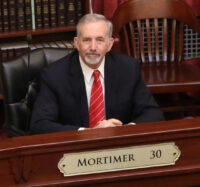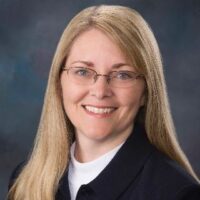Key lawmakers say closer tabs should be kept on school districts with large savings accounts and supplemental levies, but they say the state won’t meddle with local control.
“We need to review the numbers, including the districts with levies and those without,” said Sen. Dean Mortimer, chairman of the Senate Education Committee. “I think it’s a very timely discussion to be having.”
Idaho Education News recently reported that the state’s school districts and charters have $215 million in savings accounts. Six Idaho school districts and three charter schools carried fund balances of more than 70 percent of their operating revenue in 2015. Of those six, Cascade, Mackay, Salmon River and West Side also raked in a combined $1.3 million in supplemental levies.

Mortimer, R-Idaho Falls, said he’s aware that some districts are holding onto millions plus receiving funds from levies, even after lawmakers increased statewide education spending by $200 million since 2015. But he’s adamant that individual districts continue to oversee their own savings accounts.
“I’m not interested in taking that from them at all,” he said. “They’re the ones with the boots on the ground. What I am saying is that the state could offer some guidance. Maybe — and I stress maybe — we need to review what they have and talk to them more.”
Mortimer said he was also concerned about districts and charters operating in the red. Last year, two districts and four charter schools reported negative fund balances of a combined total of $1.7 million.
Determining an appropriate amount to save is difficult because districts needs and expenditures vary, said Mortimer. Rep. Wendy Horman agrees. Despite being “shocked” at the amount sitting in savings accounts, Horman said her time as a trustee for the Bonneville School District opened her eyes to the difficulties of determining what a district should save.
“We were growing rapidly in Bonneville,” Horman said, which resulted in a policy to save no less than 5 percent of annual operating revenue at any given time — a reserve aimed at covering anything from unplanned enrollment to district bond measures aimed at building and upgrading facilities.
“A district’s fund balance is key to its bond rating,” Horman said. “If you have no fund balance, district can be viewed as financially unstable.”

Like Mortimer, Horman said she’d be very surprised to see the state regulate districts’ savings accounts, but wouldn’t be surprised to see lawmakers beef up statewide accountability measures. Horman, R-Idaho Falls, is a member of the Joint Finance-Appropriations Committee.
Meanwhile, superintendents across the state are at odds about what constitutes an appropriate savings amount. Some say a reserve constituting 10 percent of an annual operating budget is enough. Others say districts should shoot for a 30 to 40 percent reserve.
Superintendent Spencer Barzee recently defended West Side’s fund balance, which has exceeded 60 percent of the district’s annual operating revenue since 2012.
Basin School District superintendent John McFarlane said saving that much can send the wrong message to patrons and lawmakers.
“Why would the state give us more money if we are hoarding it?” he said. “I personally could not go to my district and ask for a levy when we had a fund balance as high as some districts now have.”
McFarlane acknowledged that each district has different needs and expenses, and that many are “gunshy” about spending down their reserves after cuts stemming from the Great Recession.
“It’s ultimately up to local leaders and boards of trustees to determine what’s best at the local level, as long as they are operating within the law,” said State Department of Education spokesman Jeff Church. State law does not dictate how much cash a district can accumulate in a fund balance, as long as the amount doesn’t exceed the district’s annual budget.
The Chicago-based Government Finance Officers Association touts some 18,000 members across the Unites States and Canada. The group recommends districts save no less than two months of operating revenues, an amount that varies greatly among districts across Idaho.
Fund balances in districts across Idaho grew by roughly 50 percent from 2008 to 2011, topping $231 million in 2011. Following a steady decline from 2012 to 2014, they again eclipsed $200 million last year.
